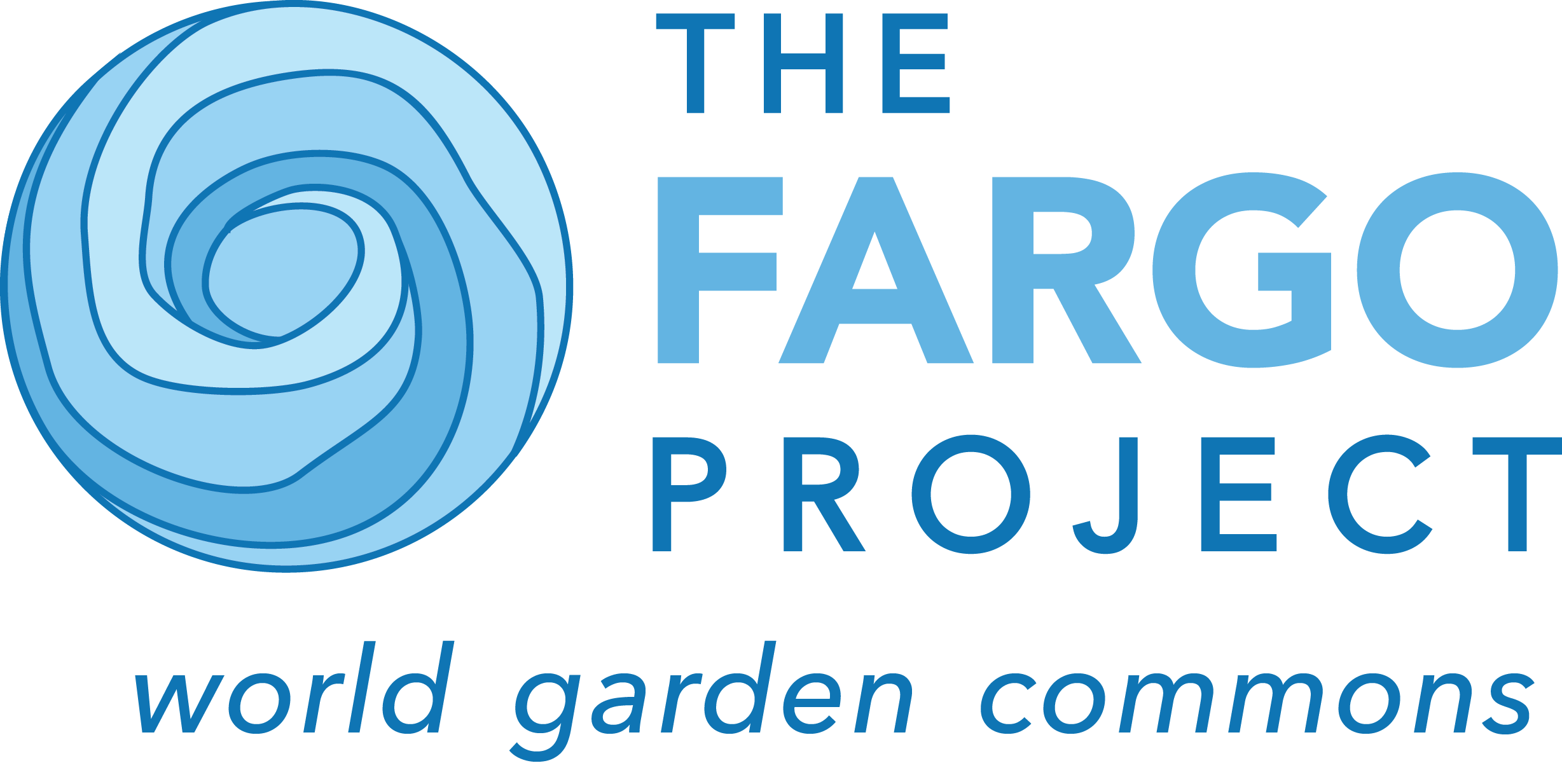Sharing Our Basin Research
The World Garden Commons at Rabanus Park is more than a place for gathering; it’s also an ecological classroom.
Researchers use the re-imagined stormwater basin to test hypotheses and compile observations. The data gathered will help artists, engineers, ecologists and landscape architects design better future projects in Fargo and beyond.
This fulfills one of The Fargo Project’s design principles: to learn how the ecological systems are behaving, and practice responsive adaptive design and adaptive management.
Five students in the Natural Resources Management program at North Dakota State University recently presented posters of their research conducted at World Garden Commons.
Biomass Potential

Nathan Welberg is investigating how much biomass potential is in the city of Fargo. Plant biomass in restored prairies is being explored as one way to reduce the amount of carbon in the atmosphere. Welberg took samples of prairie chord grass and sedges from the site.
By measuring how much plant material grew in each sample and multiplying it times available land, he determined that more than 3.5 million pounds of plant biomass could be grown in the City of Fargo. The results were used in the Carbon Negative proposal that won the Social Impact category in the 2016 Innovation Challenge at NDSU.
Community Gardening
Sara Bjorlin studied the benefits and challenges of community gardening in helping new Americans integrate into the larger community. She found that 83 percent of those surveyed said their work with the community garden helped them connect to the Fargo-Moorhead area. The project also stimulated economic, social, and emotional growth.
Inducing Stream Meandering

NDSU undergrad Aaron Green devised baffles to induce meander in the old channel bed.
Aaron Green and Hailey Greenwalt studied the best ways to naturally induce stream meandering, while upholding landscape aesthetics, in a stormwater channel. After analyzing preliminary measurements and studying best-practice design, the students recommended construction of boulder riffles and boulder/willow tree baffles at predetermined locations. The methods and structures will be monitored regularly to determine effectiveness.
Studying the Trash

The concentration of solid waste material in drift lines was higher than elsewhere in the basin.
Janessa Veach is researching where trash in the stormwater basin comes from: whether blown in or from the drainage system itself. This information is valuable because it could help the aesthetics of the site and it could make clean up more efficient. Preliminary results showed that the concentration of trash is higher in drift lines than elsewhere in the basin. Further analysis and research will be done.
City of Fargo design review garden Land Elements NDSU Rabanus Park research world garden commons
